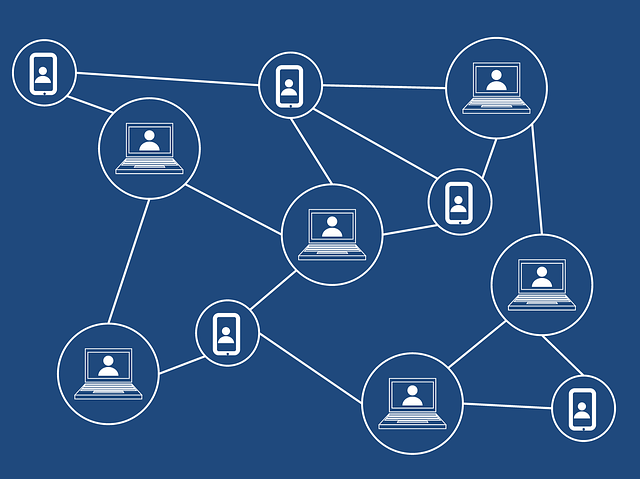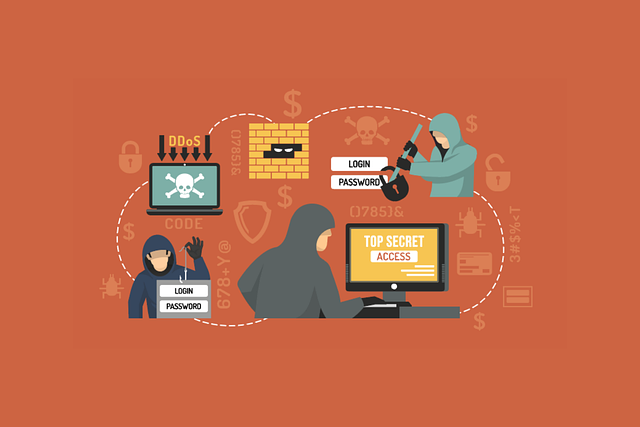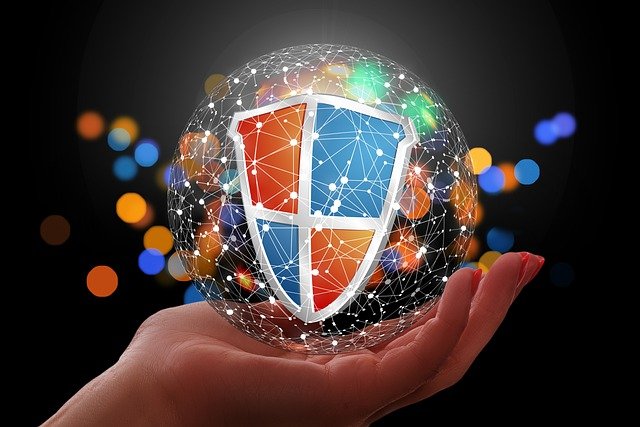I will show you how to prevent botnet attacks on your network; read on.
In many cybersecurity cases, cybercriminals use the help of a botnet to launch various cyberattack vectors like DDoS (Distributed Denial of Service) attacks, among others.
So, you are probably wondering what a botnet is. Is it the same as ‘bot’ or ‘internet bot’? How are they formed? What kind of attacks can be categorized as botnet attacks?
Here, we will answer those questions. We will discuss the concept of a botnet, mainly how you can prevent being attacked by botnets and your system and network from becoming a node in a botnet.
Table of Contents
What Is A Botnet?
First, it’s important to note that a botnet is not the same as a bot, while the two terms are often (wrongly) used interchangeably.
An internet bot is an automated software or program programmed to execute automated tasks over the internet. A bot, for example, can be programmed to copy all content on various websites repeatedly.
A botnet, however, is a different thing altogether.
A Botnet can be described as a group of devices connected to the net and under the control of cybercriminals so they can be used to perform an attack together as a group.
Cybercriminals can gain control over a device via malware infection, exploiting some system vulnerabilities, or gain access to an administrator account via an account takeover (ATO) attack like a brute force attack or credential stuffing attack.
Botnetsaren’tt is a new thin and has been around for a few decades. In the early days of the internet, however, PCs and servers were the primary targets for conversion as botnet members. However, it is a different story: various IoT devices and wearables are now connected to the internet, and they are also vulnerable to being converted into a botnet.
IoT devices like smart thermostats and refrigerators are being targeted more frequently because they tend to be more vulnerable. Think about it: when discussing cybersecurity, we are more likely to focus on our computers than our refrigerators.
How do Cyberattackers use Botnets?
As discussed, hackers can use various methods to convert your device into a botnet member, but most commonly, this is achieved via malware infection.
The thing about malware is that once a device is infected, the malware can spread to other devices, and networks are connected to the infected device, allowing the botnet to grow even more quickly.
Once a large enough botnet has been created, cybercriminals can now use the botnet for various cyberattack vectors, and the possibilities for malicious use with these large botnets are virtually limitless.
However, a widespread implementation of botnet attacks is Distributed Denial of Service (DDoS). In a DDoS attack, the hacker typically uses a botnet to send a massive amount of requests to a website or an app simultaneously. This will overwhelm the server, slow the homepage, or crash the whole system altogether, denying the service to legitimate users (hence the name).
Hackers are often hired by businesses to perform DDoS attacks on competitors, to harm enterprises, for political reasons, or other purposes.
However, botnets can be used to perform various other forms of attacks besides DDoS, including but not limited to:
- Sending spam (i.e., email spam, comment spam, etc.)
- Cryptocurrency mining is prevalent these days.
- Generate fake web traffic to skew data and drive revenue
- Threaten a user and coerce payment from them to remove their device from the botnet
- Selling/renting the botnet to other hackers
Unlike most other forms of cybersecurity attacks, the objective of a botnet is typically not to steal your data or coerce payment from you (although, as discussed, it’s possible). Instead, the botnet owner will be more likely to use your device for seemingly small tasks like pinging a particular website, attempting a brute force attack (i.e., one password attempt a day), small cryptocurrency mining, and so on).
The idea is for the activity to be barely noticeable by the device so as not to take action. This side effect can be catastrophic for the target of the botnet attack.
How To Prevent Botnet Attacks On Your Network
1. Keep Your Software and Systems Updated
One of the most common ways botnets infect systems is through vulnerabilities in outdated software. Regularly updating your operating system, applications, and firmware helps patch security flaws that cybercriminals exploit.
Steps to Take:
- Enable automatic updates for your OS and applications.
- Regularly update your antivirus and antimalware software.
- Apply security patches as soon as they are released.
2. Use a Robust Firewall and Intrusion Detection System (IDS)
Firewalls and IDS help filter malicious traffic and identify unusual activities that could indicate a botnet attack.
Steps to Take:
- Configure firewalls to block unauthorized access.
- Deploy an IDS to monitor incoming and outgoing traffic.
- Set up rules to detect and block suspicious IP addresses.
3. Implement Strong Password Policies
Weak passwords are a gateway for botnet infections, especially through brute-force attacks.
Steps to Take:
- Use complex passwords with a mix of letters, numbers, and special characters.
- Implement multi-factor authentication (MFA) for added security.
- Avoid reusing passwords across different accounts.
4. Disable Unnecessary Services and Ports
Open ports and unused services can provide entry points for botnet infections.
Steps to Take:
- Close unused network ports and disable unnecessary services.
- Use port scanning tools to identify open ports that should be closed.
- Restrict access to administrative services like SSH and RDP.
5. Educate Employees on Cybersecurity Best Practices
Human error is often a weak link in network security. Training employees can help prevent botnet attacks.
Steps to Take:
- Conduct regular cybersecurity training sessions.
- Teach employees to recognize phishing emails and suspicious links.
- Encourage reporting of unusual system behavior.
6. Monitor Network Traffic for Anomalies
Botnets communicate with command-and-control (C&C) servers, and unusual traffic patterns can be a sign of infection.
Steps to Take:
- Use network monitoring tools to track unusual activity.
- Set up alerts for high outbound traffic from unknown sources.
- Analyze logs for repeated failed login attempts or unauthorized access.
7. Deploy Endpoint Protection Solutions
Advanced endpoint security solutions can detect and prevent botnet infections before they spread.
Steps to Take:
- Install next-gen antivirus (NGAV) and endpoint detection and response (EDR) tools.
- Configure security software to automatically quarantine suspicious files.
- Regularly scan devices for malware and botnet infections.
8. Use DNS Filtering and Secure Web Gateways
Botnets often rely on malicious domains to execute attacks.
Steps to Take:
- Implement DNS filtering to block access to known malicious websites.
- Use secure web gateways to inspect web traffic for potential threats.
- Restrict users from downloading files from untrusted sources.
9. Implement Network Segmentation
Segmenting your network helps prevent the spread of botnet infections if a device is compromised.
Steps to Take:
- Separate critical systems from less secure devices.
- Use VLANs (Virtual Local Area Networks) to isolate different parts of your network.
- Restrict communication between network segments based on necessity.
10. Develop an Incident Response Plan
Despite best efforts, some attacks may succeed. Having a response plan in place ensures quick containment and recovery.
Steps to Take:
- Define clear steps for identifying and mitigating botnet infections.
- Regularly back up critical data and test restoration processes.
- Establish a communication protocol for informing affected parties.
How You Can Stop Botnet Attacks
1. Investing In a Bot Mitigation Solution
Since many account takeover attempts involve the use of bots, we can effectively prevent these account takeover attempts by installing bot detection/mitigation software.
The thing is, we can’t simply on a free and obsolete bot mitigation solution due to two main bot management challenges:
- We wouldn’t accidentally block traffic from good bots that are beneficial for our site.
- Newer malicious bots are improving at impersonating human behaviours like performing non-linear mouse movements, random typing patterns, etc.
Thus, the bot management solution must correctly differentiate bots from human users and good bots from bad bots.
DataDome is an advanced solution that uses AI and machine learning technologies to detect and manage bot traffic in real-time. Running on autopilot, DataDome will only notify you when there’s a malicious bot activity, but you don’t have to do anything to protect your system.
2. Installing Proper Anti-Malware Solution
Investing in an anti-malware solution that can utilize behavioral-based detection to deal with zero-day attacks is best.
Since, as discussed, malware infection is the most common way your system is converted into a part of a botnet, then investing in good anti-malware software is a must.
3. Educating Your Team
Social engineering and phishing attacks are also standard methods cybercriminals use to access a device. And your security is only as strong as your least knowledgeable employee.
Regularly educate your team members about the latest trends of social engineering attacks and how to defend against them. Update this training regularly to include new trends and attack vectors, and test your cybersecurity knowledge and compliance occasionally.
How To Prevent Botnet Attacks On Your Network: FAQs
How are botnet attacks prevented?
Preventing botnet attacks requires a multi-layered approach:
- Strong Passwords & MFA: Enforce solid and unique passwords for all user accounts on your network. Implement Multi-Factor Authentication (MFA) whenever possible to add an extra layer of security.
- Software Updates: Promptly update your operating systems, applications, and firmware on all devices. Updates often include security patches that address vulnerabilities exploited by botnets.
- Email Security: Educate users about phishing scams. Train them to identify suspicious emails and avoid clicking on unknown links or downloading attachments from untrusted sources.
- Web Filtering: Implement web filtering solutions to block access to malicious websites that might distribute malware used to create botnets.
- Endpoint Security: Deploy endpoint security software on all devices on your network. These tools can detect and block malware downloads associated with botnet infections.
- Network Segmentation: Divide your network into segments to limit the potential spread of a botnet infection. This can prevent compromised devices from infecting others within the same network.
- Intrusion Detection/Prevention Systems (IDS/IPS): Consider deploying Intrusion Detection/Prevention Systems (IDS/IPS) to monitor network traffic for suspicious activity that might indicate a botnet attack.
What are the mitigation techniques for botnet attacks?
If you suspect a botnet infection on your network, immediate action is crucial:
- Identify Infected Devices: Isolate and identify infected devices to prevent further network compromise. Tools like network scanners can help pinpoint suspicious activity.
- Disinfect Devices: Remove the botnet malware from infected devices using reputable antivirus or anti-malware software. In severe cases, a clean operating system reinstall might be necessary.
- Change Passwords: Reset passwords for all user accounts on your network, including administrator accounts.
- Report the Attack: If you suspect a large-scale botnet attack, consider reporting it to relevant authorities or cybersecurity organizations for further investigation.
How do I remove a botnet from my computer?
If you suspect your personal computer is infected with botnet malware, here are some steps to take:
- Boot into Safe Mode: Booting into Safe Mode with Networking can turn off some startup processes that might be related to the botnet malware.
- Run Antivirus Scans: Use a reputable antivirus or anti-malware program to scan your system for malicious software.
- Manual Removal: In some cases, instructions might be available from security software vendors or online resources. However, this approach is typically recommended for advanced users.
- Seek Professional Help: If you cannot handle complex infections, seek help from a computer technician or data security specialist.
How are botnets controlled?
Botnets are typically controlled by a “command control server”. This server sends instructions to the infected devices (bots) within the network, directing them to carry out malicious activities.
How do you enable botnet protection?
Botnet protection is typically achieved through a combination of the preventative measures mentioned earlier. Security software vendors often offer specific features to detect and block botnet activity. Additionally, managed security service providers (MSSPs) can provide comprehensive botnet protection solutions for businesses.
How can cyberattacks be prevented?
Preventing cyberattacks, including botnet attacks, requires a proactive approach. Here are some general cybersecurity best practices:
- User Education: Regularly train and educate users about cybersecurity risks and best practices. This empowers them to identify threats and avoid falling victim to phishing scams or social engineering attacks.
- Vulnerability Management: Regularly assess your network and systems for vulnerabilities. Patch identified vulnerabilities promptly to minimize the attack surface for malicious actors.
- Data Backups: Maintain regular and secure backups of your critical data. Backups can help you recover information in case of a successful cyberattack.
By implementing these measures and staying informed about evolving cyber threats, you can significantly improve your network against botnet attacks and other cyber threats. Remember, cybersecurity is an ongoing process, and vigilance is critical.
End Words
In stopping botnet attacks, we have to consider two different aspects:
- Preventing your device from being converted into a part of a botnet
- Preventing attacks from botnets like DDoS attacks
Investing in real-time anti-botnet detection software such as DataDome remains the best approach to protect your site from malware, botnet attacks, and other cybersecurity threats.
Preventing botnet attacks requires a combination of technological defenses, user awareness, and proactive monitoring.
By implementing these security measures, you can significantly reduce the risk of your network becoming part of a botnet and protect your systems from cyber threats.
SUGGESTED READINGS
- Investing 101: Should You Use Investment Apps?
- How To Uninstall Programs On Various Windows OS [Windows 10, 8, 7, Vista, & XP]
- Top 5 Cybersecurity Threats That eCommerce Websites Should Watch Out For
- Importance of CAPTCHA in Web Security
- 7 Tips To Create A Strong HackProof Password
- Comprehensive Malware Guide: Safeguarding Your Digital World
- The Must Dos And Don’ts FoDon’tsecting Your Password And Personal Data
- Bitcoin Prime: A Crypto Trading Bot Review
About the Author:
Daniel Segun is the Founder and CEO of SecureBlitz Cybersecurity Media, with a background in Computer Science and Digital Marketing. When not writing, he's probably busy designing graphics or developing websites.










